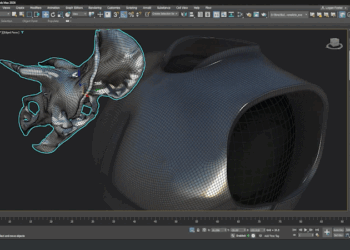Epic Games has released the Unreal Engine 5.7 Preview, with updates to procedural generation, material systems, animation tools, and MetaHuman functionality.
The Procedural Content Generation Framework has reached production-ready status, offering higher performance and flexibility for creating complex environments. Epic reports that PCG now runs almost twice as fast as in version 5.5, with GPU parameter overrides and scaling improvements improving multi-platform performance. The framework gains its own editor mode with new tools for drawing splines, painting, and executing standalone graphs, expanding the procedural workflow inside Unreal Editor.
An experimental Procedural Vegetation Editor introduces a node-based workflow for creating and customizing Nanite-ready foliage without leaving Unreal Engine. Built on PCG technology, the system allows artists to generate, sculpt, and vary vegetation such as trees and forests, using assets from Fab and new Quixel Megaplants content scheduled for the full 5.7 release.
Nanite Foliage arrives as an experimental feature, combining Nanite Assemblies, Skinning, and Voxel systems to render dense, detailed foliage efficiently on current-generation hardware. MegaLights enters beta with extended lighting support, including directional, particle, and hair lighting, along with performance controls for managing resolution and update rate.
Substrate materials are now production-ready, replacing fixed shading models with a modular structure designed for scalability and physical accuracy. Artists can combine multiple material types such as metal, clear coat, and fabric while maintaining performance across different hardware targets.
The MetaHuman Creator plugin now supports Linux and macOS, with expanded scripting through Python and Blueprint APIs. The update improves body-conforming workflows and mesh correspondence, with upcoming real-time animation generation via Live Link Face planned for the full release.
Animation and rigging improvements continue from Unreal Engine 5.6. New experimental tools include Selection Sets for managing rig controls, an updated Constraint UX window, and refinements to the Animation Mode interface. Rigging updates introduce blend shapes, sculpting, and extended skeletal editing tools for bones, morphs, and skin weights. A new Dependency View helps visualize data flow in rigs for debugging and optimization.
Epic is preparing to launch the Epic Developer Assistant with the full release of Unreal Engine 5.7. The tool will provide in-editor answers, technical guidance, and C++ code generation, though it is not included in this preview.
For more information, visit Epic Games’ official Unreal Engine website.







